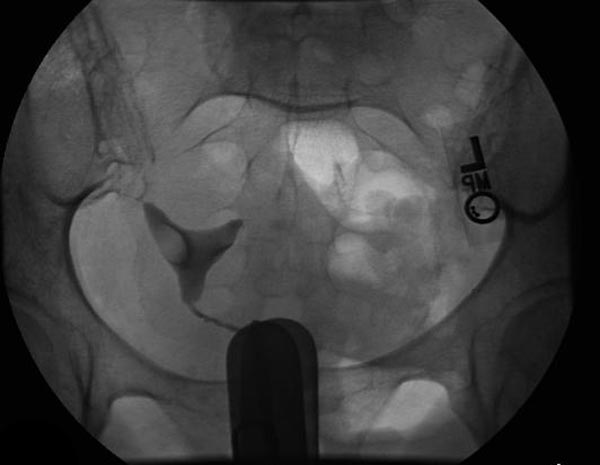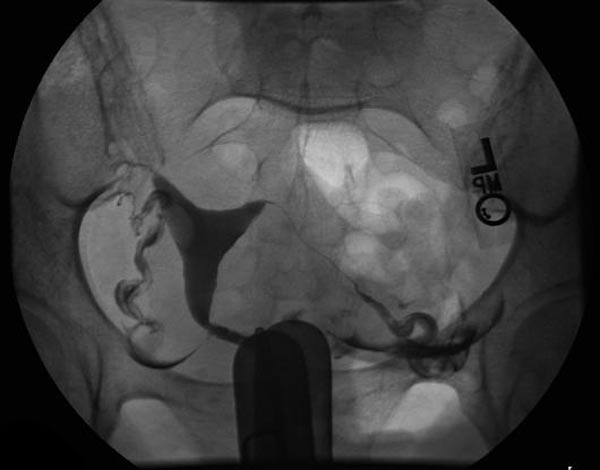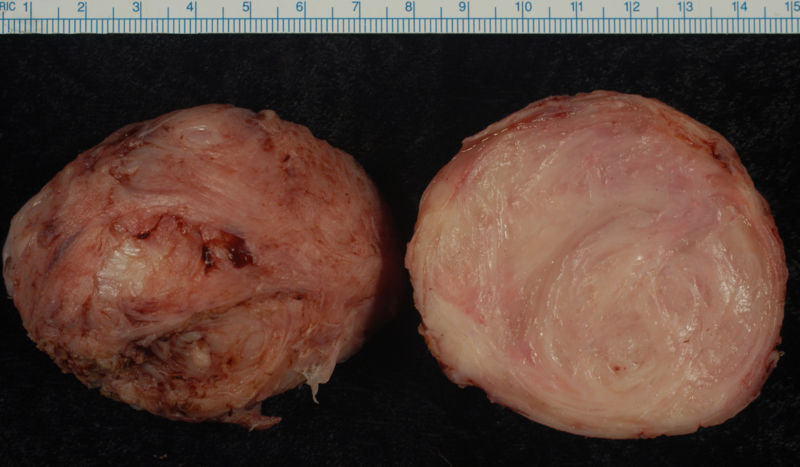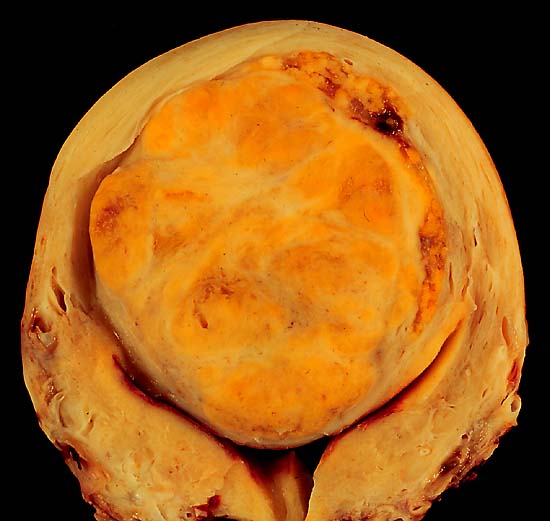Leiomyoma
For patient information, click here
Template:DiseaseDisorder infobox
|
WikiDoc Resources for Leiomyoma |
|
Articles |
|---|
|
Most recent articles on Leiomyoma |
|
Media |
|
Evidence Based Medicine |
|
Clinical Trials |
|
Ongoing Trials on Leiomyoma at Clinical Trials.gov Clinical Trials on Leiomyoma at Google
|
|
Guidelines / Policies / Govt |
|
US National Guidelines Clearinghouse on Leiomyoma
|
|
Books |
|
News |
|
Commentary |
|
Definitions |
|
Patient Resources / Community |
|
Patient resources on Leiomyoma Discussion groups on Leiomyoma Directions to Hospitals Treating Leiomyoma Risk calculators and risk factors for Leiomyoma
|
|
Healthcare Provider Resources |
|
Causes & Risk Factors for Leiomyoma |
|
Continuing Medical Education (CME) |
|
International |
|
|
|
Business |
|
Experimental / Informatics |
Editor-In-Chief: C. Michael Gibson, M.S., M.D. [1]; Associate Editor-In-Chief: Cafer Zorkun, M.D., Ph.D. [2]
Overview
A leiomyoma (plural is 'leiomyomata') is a benign smooth muscle neoplasm that is not premalignant. They can occur in any organ, but the most common forms occur in the uterus, small bowel and the esophagus.
Etymology
Uterine leiomyomata
Uterine fibroids are leiomyomata of the uterine smooth muscle. As other leiomyomata, they are benign, but may lead to excessive menstrual bleeding (menorrhagia), often cause anemia and may lead to infertility. Enucleation is removal of fibroids without removing the uterus (hysterectomy), which is also commonly performed. Laser surgery (called myolysis) is increasingly used, and provides a viable alternative to surgery.
Uterine leiomyomas originate in the myometrium and are classified by location:
- Submucosal – lie just beneath the endometrium.
- Intramural – lie within the uterine wall.
- Subserous – lies at the serosal surface of the uterus or may bulge out from the myometrium and can become pedunculated.
Estrogen and progesterone usually stimulate their growth, and hormone suppression may hence decrease their size.
- Differential diagnosis at MR imaging includes adenomyosis, solid adnexal mass, focal myometrial contraction, and uterine leiomyosarcoma.
- Nondegenerated uterine leiomyomas have a typical appearance at MR imaging: well-circumscribed masses of homogeneously decreased signal intensity compared with that of the outer myometrium on T2-weighted images.
- Degenerated leiomyomas have variable appearances on T2-weighted images and contrast-enhanced images.
Diagnostic Findings
Esophageal
They are also the most common benign esophageal tumour, though this accounts for less than 1% of esophageal neoplasms. The remainder consists mainly of carcinomas. Although the vast majority of benign esophageal tumors are clinically silent and go undetected, large or strategically located tumors may become symptomatic. [1]
Leiomyoma of Jejunum
Leiomyoma is the most common benign tumor of small bowel. Approximately 50% of cases are found in the jejunum, followed by the ileum in 31% of cases. Almost one half of all lesions are less than 5 centimeters. [2]
Treatment
Diagnosis depends on position of the myomas. Traditional Transabdominal or Transvaginal ultrasonogram can detect large submucosal and transmural myomas. For submucosal myomas saline infusion sonography is the best.
Medical Treatment:
GnRH analogues for 3-6 months are used to reduce the size of the myomas. It usually reduce the size by 60% to 70%. But once the medication is stopped the myomas will grow back.
Surgical Treatment:
Myomectomy is a choice to remove myomas. It is usually done when the client wants to preserve their fertility.
Total Abdominal or Vaginal hysterectomy with Bilateral Salpingo-oophorectomy is the definitive treatment.
Pathological Findings
-
Leiomyoma enucleated from a uterus. External surface on left; cut surface on right
-
A large, solitary leiomyoma in the uterus, distoring the endometrial cavity into a Y shape by splaying and pressing it downwards.
(Image courtesy of Ed Uthman, MD)
References
- ↑ James C. Chou, MD & Frank G. Gress, MD. "Benign Esophageal Tumors". Esophageal Cancer Overview (Cancer of the Esophagus). Retrieved 2007-03-21. Unknown parameter
|publsiher=ignored (|publisher=suggested) (help) - ↑ By Michael P. Buetow, M.D. "Leiomyoma of Jejunum". Retrieved 2007-03-21. Unknown parameter
|publsiher=ignored (|publisher=suggested) (help)
Additional Resources
- Merck Manual: Uterine fibroids
- Esophageal Leiomyoma
- Atlas of Pathology uterine leimyoma



